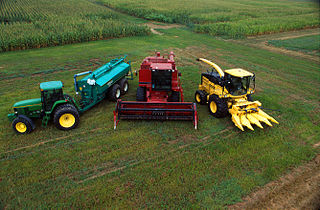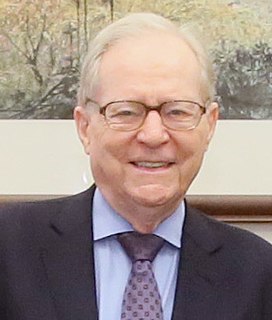This aims to be a complete article list of economics topics:

The Common Agricultural Policy (CAP) is the agricultural policy of the European Union. It implements a system of agricultural subsidies and other programmes. It was introduced in 1962 and has undergone several changes since then to reduce the cost and to also consider rural development in its aims. It has, however, been criticised on the grounds of its cost, and its environmental and humanitarian effects.

An agricultural subsidy is a government incentive paid to agribusinesses, agricultural organizations and farms to supplement their income, manage the supply of agricultural commodities, and influence the cost and supply of such commodities. Examples of such commodities include: wheat, feed grains, cotton, milk, rice, peanuts, sugar, tobacco, oilseeds such as soybeans and meat products such as beef, pork, and lamb and mutton. A 2021 study by the UN Food and Agriculture Organization found 87% of the $540bn farmers given every year between 2013 and 2018 in global subsidies are harmful to both people and environment.

Economic geography is the subfield of human geography which studies economic activity and factors affecting them. It can also be considered a subfield or method in economics. There are four branches of economic geography. There is, primary sector, Secondary sector, Tertiary sector, & Quaternary sector.
Agricultural economics is an applied field of economics concerned with the application of economic theory in optimizing the production and distribution of food and fiber products. Agricultural economics began as a branch of economics that specifically dealt with land usage. It focused on maximizing the crop yield while maintaining a good soil ecosystem. Throughout the 20th century the discipline expanded and the current scope of the discipline is much broader. Agricultural economics today includes a variety of applied areas, having considerable overlap with conventional economics. Agricultural economists have made substantial contributions to research in economics, econometrics, development economics, and environmental economics. Agricultural economics influences food policy, agricultural policy, and environmental policy.
Articles in economics journals are usually classified according to JEL classification codes, which derive from the Journal of Economic Literature. The JEL is published quarterly by the American Economic Association (AEA) and contains survey articles and information on recently published books and dissertations. The AEA maintains EconLit, a searchable data base of citations for articles, books, reviews, dissertations, and working papers classified by JEL codes for the years from 1969. A recent addition to EconLit is indexing of economics-journal articles from 1886 to 1968 parallel to the print series Index of Economic Articles.
The Institute for Prospective Technological Studies (IPTS), located in Seville, Spain, is one of the seven institutes of the Joint Research Centre (JRC), a Directorate-General of the European Commission (EC).

Dale Weldeau Jorgenson is the Samuel W. Morris University Professor at Harvard University, teaching in the Department of Economics and John F. Kennedy School of Government. He served as Chairman of the Department of Economics from 1994 to 1997.
Structuralist economics is an approach to economics that emphasizes the importance of taking into account structural features (typically) when undertaking economic analysis. The approach originated with the work of the Economic Commission for Latin America and is primarily associated with its director Raúl Prebisch and Brazilian economist Celso Furtado. Prebisch began with arguments that economic inequality and distorted development was an inherent structural feature of the global system exchange. As such, early structuralist models emphasised both internal and external disequilibria arising from the productive structure and its interactions with the dependent relationship developing countries had with the developed world. Prebisch himself helped provide the rationale for the idea of Import substitution industrialization, in the wake of the Great Depression and World War II. The alleged declining terms of trade of the developing countries, the Singer–Prebisch hypothesis, played a key role in this.

The Regional Economics Applications Laboratory (REAL) at the University of Illinois at Urbana-Champaign is a regional science research center for advanced graduate students in the fields of economics, geography, urban and regional planning, computer science and mathematics. Professor Geoffrey J.D. Hewings, one of its founders, served as its director until 2016. Professor Sandy Dall'erba has been its director since 2016.
Rural economics is the study of rural economies, including:

The Instituto de Economia Agrícola, linked to the Agência Paulista de Tecnologia dos Agronegócios (APTA) is a major public scientific research institute on economics and statistics applied to agricultural and farming questions, established in São Paulo, Brazil. The aim to provide technical information to support agribusiness decision makers and governmental policies.
Institute for European Environmental Policy (IEEP) is an independent, not for profit policy studies institute, a green think tank and a leading centre for the analysis and development of environmental policy in Europe and beyond. It has a strong reputation among national and European policy-makers and non-governmental organisations. The Institute is based in Brussels with a branch office in London and a network of partners in other countries, which are particularly strong in the member states of the EU. These include universities, environmental and professional associations in a range of sectors, research institutes and consultancies. IEEP brings a non-partisan analytical perspective to policy questions, engaging in both pressing short-term questions and long-term strategic studies.

Lúcio Vinhas de Souza is a Brazilian-Portuguese economist. His main research areas are global macroeconomics, development economics, finance and country risk, with extensive work experience at the developed economies of the European Union and the US, and in several emerging market regions, from the former Soviet Union to East Asia, Africa and Latin America.

Partnership for European Environmental Research (PEER) is a network of seven European environmental research centres, created in 2001.
Prospective Outlook on Long-term Energy Systems (POLES) is a world simulation model for the energy sector that runs on the Vensim software. It is a techno-economic model with endogenous projection of energy prices, a complete accounting of energy demand and supply of numerous energy vectors and associated technologies, and a carbon dioxide and other greenhouse gases emissions module.
Sustainable land management (SLM) refers to practices and technologies that aim to integrate the management of land, water, and other environmental resources to meet human needs while ensuring long-term sustainability, ecosystem services, biodiversity, and livelihoods. The term is used, for example, in regional planning and soil or environmental protection, as well as in property and estate management.

Wim Driehuis is a Dutch economist, Emeritus Professor Economics and Business at the University of Amsterdam.

Arie Reich is an Israeli legal scholar specializing in international trade law and European Union Law. He is a full professor at the Bar-Ilan University Faculty of Law, and serves as the Vice Rector of the university. He previously served as the Dean of the Faculty of Law and Dean of students.
Adesoji O. Adelaja is an academic and John A. Hannah Distinguished Professor in Land Policy at Michigan State University.










